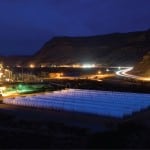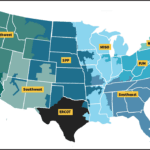POWER has been reporting for many years on changes taking place in the power generation mix around the globe. Renewable energy, such as wind and solar generation, has been growing steadily in most parts of the world as consumers clamor for more environmentally friendly sources of power. In the U.S., hydraulic fracturing techniques have unleashed vast new quantities of natural gas, bringing the price of gas down and allowing it to supplant coal as the nation’s leading fuel source for power generation. Neither of those trends is likely to change in the foreseeable future.
The evolving power landscape is most apparent to independent system operators (ISOs) and regional transmission organizations (RTOs), the entities tasked with managing the electric grid. On May 3, the New York ISO released Power Trends 2018, its annual report on technology, economic forces, and public policies shaping the wholesale electricity market in the state. The report begins, “It cannot be overstated: this is a time of great transition for the power grid.”
Distributed Generation Masks Growth
There are differences between NYISO and other North American ISOs/RTOs. For one, it has very little coal-fired generation in its mix. In fact, less than 1,000 MW of its more than 39,000 MW installed capacity is fired by coal. For the sake of comparison, PJM Interconnection and Midcontinent ISO each have more than 60,000 MW of installed coal capacity. Yet, the two behemoths—with more than 201,000 MW and 173,000 MW of total capacity in their regions, respectively—are seeing coal generation declining on their systems too, which could make NYISO’s experience particularly helpful going forward.
The changes taking place in the NYISO market aren’t all that different from what’s happening throughout North America and in many other parts of the world. According to NYISO’s report, the growth of renewable and distributed resources “has begun to measurably change the dynamics of both energy consumption and energy production.”
The transition is challenging all ISOs/RTOs to develop effective mechanisms to incentivize resource flexibility, which is needed to reliably and efficiently balance the future energy mix. The report says planning and operating the grid has become more complex, as technology, economic forces, and public policy shape a more dynamic system.
Rich Dewey, executive vice president with NYISO, gave a media presentation when the Power Trends 2018 report was released. He said grid demand has flattened since about the mid-2000s and in many respects has started to decline. There are a couple of reasons for this.
Dewey said that although the overall demand for electricity in New York is actually growing, specifically in the downstate region, which includes the Lower Hudson Valley, New York City, and Long Island, improvements in energy efficiency and the proliferation of behind-the-meter solar installations are giving “the appearance of lost load or load reductions.” As a result, NYISO predicts grid-supplied energy usage will decrease 0.14% per year through 2028. However, the effect that solar power has on energy usage is quite different from its effect on peak demand.
According to Dewey, the solar production peak takes place nominally at noon each day when the sun is at its highest and solar panels are at their maximum daily output. By 5 p.m.—when the electric system is hitting its peak—the sun is down on the horizon and solar production decreases substantially.
“What we end up getting is high ramp periods in the afternoon,” Dewey said. “As solar installations increase and extend throughout the state, we expect this to be an increasing problem in the operation of the grid, and we’re looking at both operational changes we need to make and potentially market enhancements to try to get the right kind of behavior out of the generation fleet.”
Energy storage solutions could lessen the problem. Storage capacity is expected to increase, with a state goal of 1,500 MW installed by 2025, but that too comes with challenges, the report says.
A Tale of Two Grids
Although coal-fired generation is negligible, NYISO does enjoy a fairly diverse fuel mix. Production from dual-fueled generators (gas/oil) led the mix in 2017 (34%), with nuclear power a close second. Hydropower contributed almost a quarter of usage, while gas-only, wind, and other renewables supplied most of the rest.
However, there is a big disparity between upstate and downstate regions. Nearly all of the hydro and renewable resources are located upstate, while most of the fossil generation is sited downstate. Furthermore, 23% of the downstate supply in 2017 was generated by the Indian Point nuclear plant. Entergy plans to retire both of Indian Point’s operating units by April 30, 2021. The closure will make the downstate region even more dependent on natural gas, which supplied greater than two-thirds of the region’s usage in 2017 while Indian Point was in service.
“This presents a bit of a problem within the transport of the lower-carbon output from upstate as we attempt to achieve carbon-reduction goals,” Dewey said. Although some energy does flow from upstate to downstate, transmission constraints limit the ability to supply more clean energy to the downstate region.
The NYISO report says that if transmission constraints aren’t alleviated, the two grids will unfold into two markets “as the expected growth of renewable resources upstate impacts the economic viability of existing resources—including those generators that may be needed for reliability.” Ultimately, continued stakeholder involvement in the transformation will be needed. NYISO market participants “will continue to be critical in evaluating future needs and developing equitable solutions.” Surely, the same can be said for market participants in other ISO/RTO regions and most other parts of the world. ■
—Aaron Larson is POWER’s executive editor.










